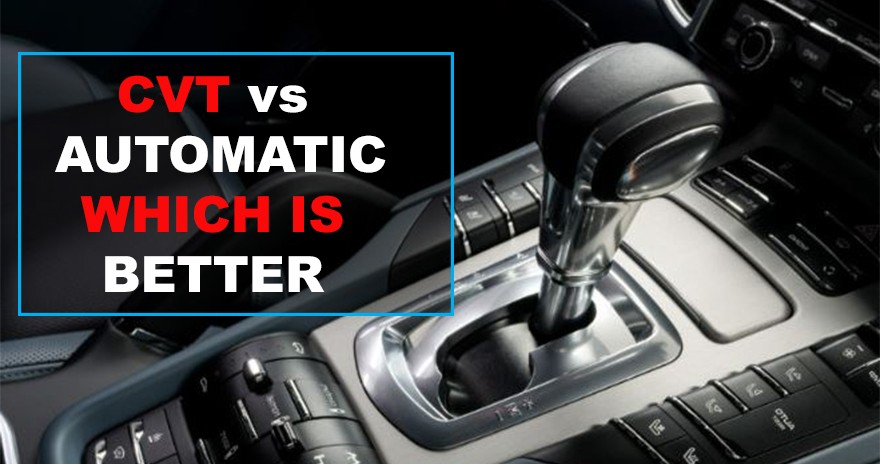Is CVT Better Than Automatic Transmission? Lots of late-model cars use continuously variable automatic transmission (CVT). It is a transmission that helps to improve the fuel economy of a vehicle. CVT vehicles are becoming very common. It is now difficult to find models that do not offer them. The automatic transmission has a lot of gears, clutches, devices, and brakes.
Most drivers are familiar with manual and automatic. The manual requests for the driver’s input in choosing the correct gear to achieve the right speed.
However, automatic shifts gear automatically without requesting for the drivers’ input.
It shifts the gear bed on the position of the throttle, speed, and engine revolution. By comparison, automatically makes driving more desirable and pleasant. How To Shift Gears In An Automatic Car and Manual Transmission cars
Is CVT Better Than Automatic Transmission
So let’s quickly address the question that you are most in coming to this article which is, is cvt better than automatic transmission vehicles? Well to me it all depends on you and your personal preference. If you are looking for control and the most fuel economical then you want to go for a CVT vehicle otherwise the automatic transmission is less tasking in terms of use.
I will explain this as we progress in this post so you can understand between both which is better cvt or automatic transmission?
Here are posts you might want to read too:
- Can You Pump Gas With the Car On (What Happens if You Do?)
- Transmission Fluid Leaking From Bell Housing, In Front & Flywheel?
- Automatic Transmission Problems and Fixes/Solutions
- 4l60e vs 4l65e Identification: Are All 4l60e Transmissions Interchangeable?
What is the meaning of the acronym cvt in cars
CVT is also referred to as traditional automatic transmission. The acronym CVT means, continuously variable transmission, and works almost as the automatic does.
It produces adequate and effective speed for every driving scenario even when the vehicle is accelerating.
It has only one gear it uses for all driving situations. CVT is different from the normal automatic transmission as the driver does not notice the shifting of gear from one place to another.
However, they usually notice a change in the RPM or speed of the engine. It is a modernized way of creating power. It has been making waves since its manufacture.
What is CVT transmission?
The CVT transmission is the type of transmission that changes through different ranges of gear ratios while the vehicle moves.
It is different from other types of transmissions because it does not offer a fixed gear ratio number.
As you drive it from one location to another the continuously variable transmission (CVT) changes through the range of gear ratios.
Some of its known features are shiftless transmission, and single-speed. It has flexibility which maintains a stable angular velocity, irrespective of its output speed.
It is fuel-economical and accelerates smoothly.
The automatic transmission has different gears, while the CVT does not have any. It has two pulleys that are shaped like a cone.
The two pulleys are connected with a composite belt. One of the pulleys is connected to the vehicle’s engine, while the other has a constant connection with the other transmission.
The pulley widths change every time, depending on the power that is needed from the engine by the wheel.
When one of them is getting larger, the other becomes smaller. It allows the car to accelerate smoothly, and have the necessary strength.
CVT transmission life expectancy
A CVT transmission life expectancy is about 100,000 miles. However, if you don’t give it proper care, it will not last as expected.
You need to ensure it is taken care of so that you can get everything you want out of it.
There are lots of design features that could help you to increase your CVT life expectancy as much as possible.
One thing you can do is to find out whether your car’s CVT uses a clutch or torque converter.
With a clutch CVT, you need to be careful with some of the things you do with it. The most common type of CVT is the torque converter.
Which is better CVT or automatic transmission?
Automatic transmission and CVT are good, depending on what you want, as a car owner. With an automatic transmission, you may choose Park, Reverse, Drive, or Neutral.
After choosing any of the four automatic transmissions, the transmission will have to do every other thing for you without you further instructing it on what to do.
As soon as you press the pedal, the transmission will match the engine and the speed of the road.
It is usually built by transmissions with various gears, and they might have up to ten individual gears. It helps the vehicle to maximize the gas mileage and deliver an efficient performance.
CVT works just like an automatic transmission, but they have a different construction. The continuously variable transmission (CVT) does not use any gears at all.
It functions by using two pulleys that are shaped like a cone. The pulleys are responsible for transferring power from the engine of the vehicle passing through the transmission and then to the wheel of the car.
The width of the pulleys is different, depending on power inputs. They also allow for smooth acceleration.
The automatic transmission engages drivers due to its fast response, and individual gears. It also maintains a stable relationship with the speed and sound of the engine.
Unlike the CVT, the automatic transmission is cheaper to repair. CVT helps the fuel economy of the vehicle, unlike automatic transmission.
It is small and allows for smooth acceleration. CVT also has few components and is lightweight.
CVT transmission pros and cons
Pros of CVT transmission
If you are a driver, there are lots of benefits you get to enjoy, using CVT. Some of the pros of CVT are
- CVT helps in improving your vehicle fuel economy and efficiency
- It gives smooth driving and acceleration, irrespective of the speed of your car. This is possible because there are no hard gear shifts.
- With CVT, you can drive uphill easily without hard shifting. You don’t need to find the right gear ratio.
- Vehicles with CVT find it easy to take off since there is no gearing.
Cons of CVT transmission
Although CVT has many things to offer, it has its own drawbacks. Some of them are:
- It is more expensive than its counterparts. You must be ready as a driver to spend.
- CVT is not designed to deal with lots of horsepower or torque.
- Repairing might be hard as some mechanics don’t feel comfortable, working on a CVT vehicle.
- CVT transmission makes a lot of noise compared to the automatic transmission.
11 cars with CVT transmission problems
- Honda
- Nissan
- Toyota Corolla
- Toyota Camry
- Chevrolet Malibu
- Ford
- Subaru
- Mercedes
- Mitsubishi
- Audi
- Infiniti
Honda CVT transmission problems
Most of the Honda models released from 1999 to 2004 are known to often develop CVT issues. The models that usually develop these problems are Accord, Odyssey, and Civic.
One of the symptoms of faulty CVT is irritating noise during acceleration. This noise mostly occurs when the CVT is trying to match the speed of the vehicle.
Vehicles with CVT transmission are supposed to be smooth during acceleration.
One of the transmission problems of Honda is that the vehicle often develops jerky movement during acceleration.
If you are using a Honda, you need to make sure the car is regularly maintained. This is because Honda CVT problems are usually very expensive to fix.
Conclusion Automatic, and CVT work in almost the same way but with slight differences. Choosing a CVT or an automatic transmission vehicle depends on the benefits you want to enjoy as a driver
Related Article: 4l60e Fluid Types: What Are 4l60e Transmission Fluid Capacity
Hi dear, I am Gift Dennis I have been working as a Radiographer for over 8 years, but I switch my profession to what I love which is auto body part repairs and I recently got my automotive diploma last August 2020 as an auto-body repair technician. I love fitness and everything about cars, so here is where I share my expertise and experiences with those who wish to hear about them.


